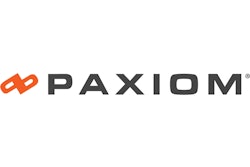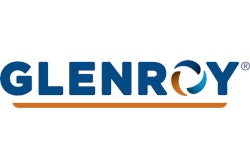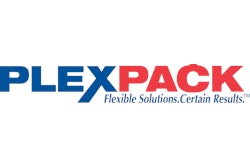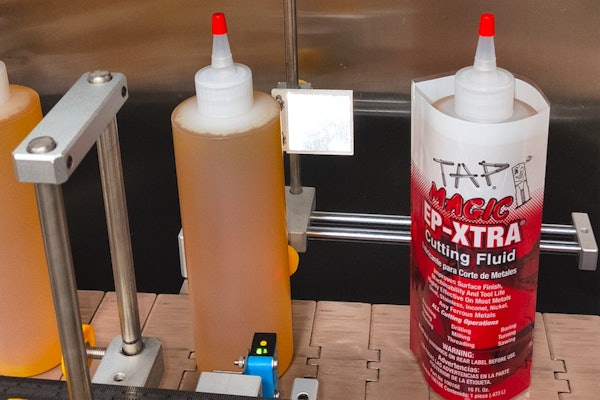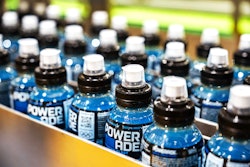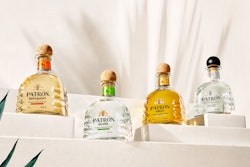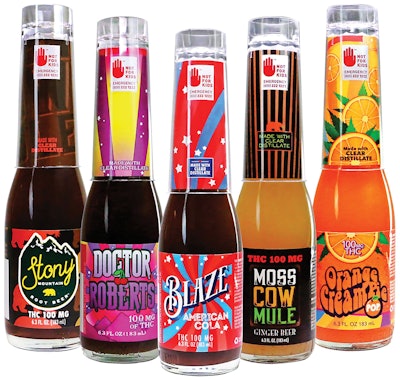
It’s a 21st century gold rush. People are leaving home, relocating, and changing careers. They’re leaving jobs in finance, marketing, farming, crop science, and a variety of other perfectly respectable fields. You hear about them abandoning cushy paychecks at Google, Microsoft, Pepsi, and American Express. Some even come from serving in the military.
They’ve all joined the throngs trying to make it big in a brand-new enterprise: growing, processing, packaging, and retailing recreational marijuana. It’s a new industry emerging right before our very eyes and, predictably enough, it’s struggling to establish something resembling equilibrium.
That struggle grew considerably more complicated with the January 5 decision by Attorney General Jeff Sessions to lift an Obama-era policy of leniency that kept federal authorities from looking into marijuana sales in states where the drug is legal. All stakeholders in the burgeoning movement to legalize marijuana are watching closely to see what will happen now that Sessions has left it up to federal prosecutors to decide what to do in cases where state rules contradict federal drug law.
Even before the Sessions announcement, the cannabis industry was fraught with risks and complications. Ever-changing local and regional regulations threaten continued success, or at least place a lot of burdens on young companies. Testing each batch, placing individual barcodes on each sellable product to be scanned at point of sale for track and trace, and affixing child warning labels—these are just a few of the tasks on their to-do lists.
It’s an industry filled with contradictions. Package design, for example, is sophisticated, rivaling anything at the CPG level, and retail outlets resemble the lobby at the Bellagio in Vegas. But production, processing, packaging, and labeling are not so flashy, relying for the most part on labor-intensive manual and semi-automatic processes. Most see the need for expansion, automation, best practices, and standards.
And all agree the time is right now. There is an unprecedented interest in machinery and what it might be able to do. There’s no future in a dozen young workers sitting on the floor trimming, weighing, bagging, sealing, and labeling by hand. And you are one of the lucky employers if, week to week, you have the same dozen workers. HR duties like interviewing, hiring, background checks, and training are a nightmare. Some operations have a permanent “help wanted” sign up.
Most report it’s hard to keep up with product demand. Having focused the first few years on growing a crop, the emphasis now is on harvesting, trimming, processing, and packaging. Operational efficiency and scalability are badly needed.
Bewildering variety
Rarely before has one product been identified to have so many uses or come in so many packaging formats, including glass and plastic jars, rigid tubes, decorative tins, cartons, flexible pouches, bottles, etc. And look at the ways cannabis can be delivered: smokable flower, oils for vape pens, infusion into foods like candy, chocolate, mints, cookies, brownies, soda pop, teas, and sugars. There are fast-growing market segments like tinctures, shatter, and wax, not to mention talk of cannabis-dissolving mouth strips and cannabis-infused wine. There’s also CBD oil, applied topically for one’s skin and joints or taken orally for help with seizures, PTSD, cancer, and other maladies.
States that have gone recreational are Alaska, California, Colorado, Oregon, Nevada, Washington State, Maine, and Massachusetts. Early reaction suggests that they’ll fight Attorney General Sessions tooth and nail on the changes he seeks to implement. There’s plenty at stake when you consider that some 30,000 jobs have been created in Washington State alone. And then there’s all that cannabis-generated revenue now streaming into state coffers.
Now that California has legalized recreational marijuana, there are predictions of up to 10,000 retail establishments offering more than 500 SKUs. Many of the operators are trying to build a model they can replicate and roll out as more states vote yes on legal recreational use. Meanwhile, whispers about Big Tobacco, Big Pharma, and mainstream Consumer Packaged goods companies getting involved are heard with increasing frequency.
So where does packaging fit in? The short answer is everywhere. Growers and marketers are showing an insatiable interest in automation, though in most cases “semi-automation” would be more accurate at this stage. Harvesting and trimming operations are automating as well.
Materials are being explored just as aggressively, as are packaging formats. Material science will play an especially crucial role as new cannabis products just emerging from development call for complex structures capable of providing moisture and gas barrier. Strips for oral delivery is just one example of these new products now coming out of R&D.
Worth noting, too, is how the cannabis industry supports myriad related businesses such as third-party logistics, security lighting, video and alarms, indoor grow lighting, irrigation, extracting equipment, chemicals, etc. The list goes on and on.
Worth watching
Two areas worth watching are contract packaging and equipment leasing. While growers are raking in the cash, much is slipping through their fingers. Ridiculously high taxes leave little behind, especially after high labor cost. It might make sense for contract packagers to specialize here and remove capital equipment costs from the grower side. We did not hear of any examples of cannabis contract packaging, but that doesn’t mean it isn’t going on already. No one we talked to knew of any contracts, however. Maybe it will be Contract Manufacturing Operations (CMOs) already serving the pharma market who bring contract packaging to the cannabis business.
Equipment leasing is another possibility. It would allow smaller and medium-sized players to get automated. There are some OEMs, including PMMI companies, that have leasing arrangements in the cannabis industry already, but the practice is not yet widespread.
In this fragmented market, it’s quite possible that regional preferences may vary. Colorado, for instance, might go for contract packaging while Washington becomes an equipment leasing state. The point is that retailers, growers, and processors now have options. Savvy material and equipment suppliers see the growth and may ultimately design machines to address cannabis-specific packaging challenges, according to PMMI Business Intelligence (see accompanying sidebar).
Rest assured that as this gold rush continues to pick up steam, as volumes and numbers of SKUs and demographic constituents multiply, smart business practices will bring order and profitability to what now resembles the Wild West. In the meantime, we present here a slightly fragmented and necessarily busy snapshot of the cannabis scene as it exists today. Just remember our warning: By the time you finish reading this, everything may have changed.
How to target the cannabis consumer
Located in a nondescript building in the heart of Seattle’s industrial SODO district, in a facility that used to house a seafood processing operation, Evergreen Herbal creates cannabis-infused consumer packaged goods for patients and recreational cannabis customers.
Established in 2012 as one of Washington State’s first manufacturers and distributors of cannabis-infused products, Evergreen Herbal’s team of chefs, herbalists, and technicians continues to develop new ways to process and package cannabis. Products range from pre-rolled joints to carbonated beverages, teas and tinctures, infused chocolates, mints, sugar, and even hard candy.
Running a cannabis business is not easy, according to Andy Brassington, Evergreen CFO. In addition to the same issues that stress every other business, there are numerous additional issues that are difficult to manage. State cannabis packaging laws are “hit or miss” and often quite inconsistent.
“When packaging laws change as frequently as they do, it’s difficult to forecast and build momentum. We’re sticklers about the regulations, and we do our best to be compliant,” says Brassington.
“From our pure, zero-additive vape oil to our decadent dark chocolate bars, we are all about delivering delicious cannabis products made with local ingredients as well as natural colors and flavors whenever possible,” says Marco Hoffman, Evergreen Herbal’s Founder and CEO.
From safety to potency to value, creating a world-class cannabis brand is Evergreen Herbal’s brand strategy. “Cannabis processing is a hands-on business,” says Hoffman, “with testing at multiple stages across extraction, manufacturing, and packaging to ensure elimination of residual solvents, pesticides, and microbials.”
Like other pioneering companies that want to see a fledgling industry grow to maturity, Evergreen Herbal is committed to collaborating with fellow industry leaders, researchers, policy makers, and advocates to build a thriving cannabis industry that benefits everyone.
As one of the first to introduce a cannabis-infused beverage in Washington State, Evergreen Herbal experienced problems early on with product consistency. “We’ve re-invested and re-configured our bottling line to ensure the quality our customers have come to expect,” says Jackie Brassington, Evergreen Herbal’s General Manager.
Another popular treat manufactured by Evergreen Herbal is the 4.20 candy bar, which also comes in a mini format. The cannabis-infused minis come in a ten-count bag. Individual 10-mg minis are placed on a conveyor and run through an Excel flow wrapper for individual wrapping before getting bagged.
Products are labeled by machine and by hand. Secondary labels are mandated by law to include producer, processor, and retailer information as well as individual harvest batch data. Another required label, recently introduced by the Washington State Liquor and Cannabis Board (WALCB), clearly states “NOT FOR KIDS.” Different product types (i.e. form factors) often have different packaging rules and regulations, which makes efficiency elusive.
As for the marketing genius behind Evergreen Herbal, meet David Paleschuck, a veteran marketer and branding expert with more than 20 years of experience at world-class companies including American Express, MasterCard, Pepsi, and Microsoft. “I saw the opportunity materializing right in front of my eyes,” says Paleschuck. “My friends and colleagues were leaving Starbucks, Amazon, and other world-class companies to enter the segment. I knew it was time”.
Paleschuck realized he had a skillset that the industry required but didn’t have the in-depth technical and cultural knowledge possessed by industry insiders and lifetime veterans. So he set out to learn more. In doing so, he’s interviewed more than 400 cannabis brand owners, master growers, and industry influencers. He perhaps now knows more about cannabis brands than any one individual, and the result of his journey is a soon-to-be released book titled, Branding Bud: The Commercialization of Cannabis, a critical review of legal cannabis brands, their assets, and the strategies behind them.
“What it comes down to is there are discrete and non-discrete cannabis consumers,” says Paleschuck. “There are those who don’t want to smell like cannabis and those who don’t mind. Additionally, there are patients and recreational consumers. We separate our product lines into these categories and build customer profiles around them. In many ways, it’s about lifestyle and how cannabis consumption fits into it.”
Building brands and creating “consumer hooks” is what this veteran marketer is all about. He creates brands from relevant topics and concepts that resonate with consumers. From Mountain Dew’s “Do The Dew” to MasterCard’s “Priceless” campaigns, Paleschuck understands what’s meaningful to consumers. “It’s all about ‘trust marketing,’” he says. “We’ve come to expect consistent user experiences from the brands we buy. Our credit cards, our favorite drink, and now our favorite cannabis-infused product. It’s all very much the same.”
So what’s different? “Everything’s different,” says Paleschuck. “Cannabis cannot cross state lines. That means we think in terms of local markets. While many of Evergreen’s brands are sold in different states, they have slightly different packaging due to varying State rules and regulations. That’s why we pay a lot of attention to packaging and the ever-changing rules and regulations.”
Paleschuck and colleagues at Evergreen Herbal are expanding to meet the demand of the growing legal cannabis market. Management understands it will take time to create the efficiencies and standard practices that exist in other industries. Until then they’ll run lean and mean—and most important, compliant.
Cannabis with a higher purpose
Housed in a former Boeing wing sub-assembly warehouse in Renton, WA, Soulshine is an indoor grower/processor concentrating on growing premium products. Co-founders Mike Mercer and Patrick Wlaznak came out of the financial world, and they spent a lot of time deciding what type of company they wanted to start. High on the list was being socially conscious.
“After figuring out our logo, our look, and what the brand should mean to us, it was important to focus on the packaging material,” says Wlaznak. It needed to be compostable or recyclable and definitely non-wasteful. “Something we would be proud to see in our retail partner stores,” says Wlaznak.
A typical packaging format at Soulshine is a bag in a windowed folding carton. The clear low-density polyethylene bag, supplied by ClearBags, is recyclable, as is the folding carton, supplied by Emerald City Graphics. Even the carton’s clear window scores sustainability points. Made by Multi-Plastics, Inc., the EnviroSafe® material is a biodegradable cast cellulose film.
As for the label on the carton, that’s also compostable. The labels come from Pure Labels, a division of Elevate Packaging. That firm’s Rich Cohen says there is a “secret sauce” element to precisely how the labels are made, but essentially his firm is more of a “value-added broker” than a press-owning converter. An unnamed supplier sends Elevate Packaging a paper face stock that is made from sugar cane by-products and is certified compostable. Elevate sends the material to another unnamed partner who applies a release liner by way of an adhesive that is also certified compostable. Then the material is returned to Elevate’s Chicago facility. When a customer requires labels, Elevate outsources the printing to one of three converters and arranges to have the finished rolls of labels sent to the customer.
Soulshine’s Wlaznak continues to look for ways to optimize sustainability in his approach to packaging. The bag that holds cannabis flower inside the carton is a good example. Though currently made of a material that can be recycled, Wlaznak is working with a company in Israel that may be able to deliver clear compostable/barrier food grade bags.
To go a step further, Soulshine also supports Emerald City Pet Rescue, contributing a portion of each sale to that organization. Soulshine customers appreciate this commitment to social consciousness, and they are not shy about singing the company’s praises on social media, both for sustainable packaging and commitment to animals.
Soulshine employs individual grow rooms for maximum control of plants and any pests that might appear. And while grow lights do use a lot of electricity, many farms are located hundreds of miles away from Seattle and use a lot of fuel shipping product to the city. Soulshine, by contrast, is only blocks from many of their retail partners. They also recycle 60 percent of their grow water.
The grow rooms occupy about 20% of the available space in the warehouse, and in order to expand Wlaznak knows what has to happen next. “The single biggest limit to our growth right now is the need to automate our packaging,” he says. Currently, all packaging is done by hand, but Wlaznak and a team recently traveled to PACK EXPO Las Vegas where they purchased a Paxiom machine for weighing, filling, and sealing.
Celebrity branding
Athletes For CARE (A4C) is a 501 (c) 3 not-for-profit organization that was founded by a group of professional athletes who have united together to raise awareness on issues such as addiction, chronic pain, access to alternative medicines, mental health, CTE, and traumatic brain injury.
These athletes have rejected opioids to treat their pain and depression and are exploring alternatives like CBD oils and other cannabis treatments utilizing hemp. Now, some of these retired athletes are launching their own brands.
Marvin Washington, for example, retired after 11 seasons in the NFL and launched ISOSport™, a hemp-based line of high-performance products—hemp water, protein powder, and cooling cream—designed to support the unique needs of professional and “prosumer” athletes.
Greta Gaines, an internationally recognized pro-snowboarder and fly-fishing devotee, has launched The Hempery. It sells hemp-based cosmeceuticals for skin care, offering benefits that include moisturizing without clogging of skin pores. Anti-aging and anti-inflammatory benefits are also touted.
Selected 39th overall in the 2009 NFL draft, Eben Britton spent four years with the Jacksonville Jaguars followed by two with the Chicago Bears. He retired from the NFL with a laundry list of injuries including a dislocated shoulder (torn labrum), herniated discs, and sciatica, as well as a handful of concussions. Eben suffered unimaginable muscle, joint, and body pain as a result of enduring years of abusive injuries and then continuing to play with those injuries. Britton used cannabis as a preferred method of pain management during his football career and is now employing non-narcotic hemp extracts with his line, Be Truˉ Organics™. Started by Britton, along with Sean Entin and Julie Wilson, Be Truˉ Organics™ nourishes mind, body, and soul with Gummy Chews, Oral Spray, and Pain Relief Cream.
This is hard work
Roy Arms is a hard-working entrepreneur. He first applied for a retail license to sell cannabis in Washington State, but he lost a randomized lottery and so pivoted his focus to production and processing instead.
He and his brother built Boggy Boon, with its seven greenhouses for growing cannabis, all by hand. There are indoor growers and outdoor farms, but Boggy Boon is a “hybrid” grow operation. They use natural sunlight as much as possible but are able to completely control the environment with supplemental lighting, heating, evaporative cooling, etc.
A family-owned and operated Tier 3 producer/processor in central Washington, Boggy Boon is a good three hours from Seattle. Arms uses a third-party delivery service (another ancillary business supported by recreational marijuana) that comes two to three times each week to pick up his finished, packaged product for delivery to retailers all over the state, hundreds of miles away.
Chelan County has more than 40 growers, and many are fighting for the right to stay in production. Boggy Boon, located in a fairly remote place, is working with the county on its recent ordinance that requires the greenhouses to convert their facility to meet “indoor” building criteria. Members of the community are protesting about the strong smell of cannabis from farms closer to their own properties, and the county has taken action that will force many of them to either move or shut down. This is just another illustration of the changing regulatory landscape that comes with growing cannabis for recreational use.
Arms currently is growing high-end strains with solid margins, but he’d love to start two or three outdoor farms so he could serve the low end of the market as well. Genetic selection is critical to success. Each strain started out with one full row in each greenhouse (approximately 280 plants), but keying in on retailer feedback, Boggy Boon now devotes three rows per harvest to their most popular strain, Death Star.
Rather than describing the product in any technical terms on the packaging, Arms focuses on the user experience that he feels the consumer cares about. Each strain lists its specific effects such as “Relaxed, euphoric, happy,” on the flexible packages. Each package has a see-through Sasquatch window so that consumers can view the product prior to purchase.
Showing off his product is essential to capturing consumers, but pre-rolled joints are still packaged in opaque plastic tubes. “I’d really like to find good, affordable transparent tubes for these,” he says.
Most of Boggy Boon production is by hand—trimming, weighing, bagging, sealing, and labeling. Arms did purchase a joint filling machine, which resembles a candle mold but with smaller chambers. He also offers infused joints, where machine-filled joints are manually coated with CO2 oil and then coated with keef (a fine THC-laced powder). The infused joints are then loaded into plastic tubes by hand. The work is labor intensive, and there is always a help wanted sign outside Boggy Boon’s door.
Arms is still trying to figure out the best way to expand. He tried oil cartridges for vape pens, but found many leaked. An alternative cartridge did not leak as much, but failed after minimal use leaving unused oil for the consumer. Arms estimates about 10% of all cartridges fail. Imagine buying a vape pen for a destination bachelor party and discovering your product failed to work. He did not want to risk his reputation with retailers, so he backed off.
A businessman, Arms knows his crop yields, prices, and expenses. He even tracks each employee for number of plants harvested, buds trimmed, or number of completed packages per hour. He knows he has to start exploring some packaging automation options to control his labor costs. He is currently investigating labeling machinery, and seeing his determination, it’s a good bet he’ll figure it out.
The science of freshness
“You wouldn’t leave a glass of wine out all night and expect it to be fresh or taste the same the next day,” says Serge Chistov from Honest Marijuana Company in Colorado. Chistov sounds like a scientist as he discusses perishability and the chemical changes over time that degrade cannabis.
“Marijuana, like most plant and animal matter, is perishable,” says the company’s website. “That means that it is likely to decay, go bad quickly, or lose inherent properties that are important to the product. To put that in perspective, think about a 2-liter bottle of soda. When you first open the bottle, if the product is good, the carbonation is still a big part of the experience. The soda is fizzy, and that’s fun.
“But now think about that soda two days later. No matter how tightly you turned the cap, the carbonation has escaped and the drink is no longer fizzy. The soda has gone flat. Though it’s still safe to drink, an inherent property that is important to the product—and the experience—has disappeared. That’s perishability.”
Light, oxygen, humidity, and temperature all combine to degrade a flower, joint, or concentrate after repeated openings. Why is this degradation bad? Because it minimizes “the entourage effect,” says Honest Marijuana’s Web site. That is, it’s a combination of THC, CBD, terpines, etc., that contribute to the effect marijuana has, and if one component of that entourage is degraded, the overall effect is negatively affected.
To preserve this “entourage effect,” Honest Marijuana comes packaged in an easy-open steel can with a ring-pull end and a snap-on plastic lid for reclosure purposes. After the cans are filled they are placed beneath a liquid nitrogen dosing unit from Vaccum Barrier Corp. that adds a small amount of nitrogen (see video). Then the ring-pull end is placed on the can and the can goes through a conventional seaming unit. The liquid nitrogen gases off and displaces residual oxygen content, reducing it from somewhere in the range of 25% to less than 4%. This greatly extends the amount of time the product stays fresh. The can supplier is n2 Packaging, and that firm’s partner GreenTek Innovation provided the machinery that’s involved (see accompanying sidebar below titled "Unusual C-R can end").
Honest Marijuana has also just launched two- and six-count blunts in a packaging format very different than the round cans from n2 Packaging, though once again nitrogen is involved for shelf life extension. The primary package is a tin container from Keenpack Ind’l Ltd. that holds either two or six blunts. The tin is placed into a thermoformed blister produced one-up on a Nano 60 thermoform/seal machine from Mactec. The 12-mil-thick forming web used is a PVDC-coated PVC material from Tekni-Plex. After an operator places a can in the formed cavity, it’s taken through an evacuation and nitrogen backflush chamber before lidding material is heat-sealed in place. Supplied by Glenroy, the lidstock is a seven-layer construction that includes a layer of foil for barrier purposes as well as an easy-peel component that is compatible with heat sealing to the tray. According to Mactec’s Mike Castaldo, the finished package qualifies as child-resistant because the only way to get through the materials is by way of a scissors. Also integrated into the Mactec machine is a Markem-Imaje X60 thermal-transfer printing system for imprint of lot and date code on the lidding material.
Clearly, Honest Marijuana appeals to a very specific breed of cannabis connoisseur. Great branding is all about telling a story, and Serge Chistov tells a very compelling one. Each strain is unique, and packaging ensures you get the strain that delivers the results and user experience the consumer pays for.
Honest Marijuana, by the way, features one of the best Web sites in the industry. Consumers are curious, wanting to experiment with different delivery methods, in the hopes of connecting with a brand. Found on the Web site are sections like “Organic Marijuana: The Definitive Guide.” Another section is on growing, including a list of necessary supplies. Yet another section, “Preservation and Perishability,” is a deep dive on the science of freshness. This company tells an engaging story of thought leadership.
Design takes flight
Harmony Extracts was launched in 2016 with one goal: to create cannabis concentrates of the highest quality. The Denver-based team of roughly 36 employees has quickly risen as a leader in Colorado cannabis concentrates, and package design has played an important role.
Austin, TX-based Pentagram was enlisted to develop Harmony’s brand identity. Providing a useful design framework was Harmony’s deep respect for the natural world, specifically the hummingbird. Why the hummingbird? Because it’s nature’s most efficient extractor, and Harmony Extracts aims to mimic the bird’s powers of extraction by efficiently refining only the best of what nature has to offer. It was this background that led Pentagram to design the Harmony hummingbird. Replete with cannabis-leaf-shaped tail feathers, the design nicely echoes the brand’s roots in nature.
The same care and attention to detail was brought to bear as Harmony Extracts worked on the packaging for The Pure™, a new line of THC vape pens that deliver 100% pure, natural terpenes derived from the cannabis plant. Like any package design project in the newly emerging and constantly changing recreational cannabis market, arriving at a successful package for The Pure was challenging. Shelf appeal, of course, was crucial in a Colorado market already crowded with competitors. But regulatory constraints also had to be factored in. On top of certain warning messages that must be clearly visible, the package must also be child-resistant.
Upon referral from a mutual contact in August 2016, Harmony enlisted New Jersey-based Sonic Packaging Industries (www.sonicpackaging.com) to come up with a secondary packaging solution to house the new line of vape pens. The majority of packaging providers Harmony spoke with prior to Sonic could provide part of the solution but not all. Some did not fully grasp Harmony’s brand vision, while others did not have the range of converting competencies required. Sonic’s experience in child-resistant package design coupled with an ability to create a “turnkey” solution for componentry procurement and customization that could carry the brand message made Sonic an easy choice for The Pure.
Harmony came to Sonic seeking creative design coupled with intuitive, functional parts that could remain with the consumer long after the cartridge was removed. In addition, Harmony wanted primary packaging for The Pure to have a soft touch with matte finish and spot varnish. Secondary packaging for The Pure also had to be designed around a child-resistant vial to contain the profiled vape cartridge.
Answering Harmony’s “cannabis call” was a first for Sonic. Having maintained a flawless track record for 25-plus years creating packaging solutions for Fortune 500 companies in pharmaceuticals, medical, diagnostics, and cosmetics, taking on The Pure was a risk. Not only would it mean working in a developing industry without clearly defined requirements, working in the cannabis space also meant possible conflict with other vertical markets in the Sonic portfolio. It was a hard call, but Sonic decided to greenlight the project.
After conducting a thorough discovery and evaluation process, Sonic proposed the idea of creating a customizable holder for The Pure glass ampoule (container) with a sleeve that, once removed, would expose an internal, printed tray. The trays and cartons would be semi-automatically assembled on an as-needed basis.
Roll out of The Pure took place over the course of 12 months. During that time, Sonic worked with Harmony Extracts to iron out kinks and ensure that throughout the process, quality and adherence to regulatory standards were never compromised. Housed in packaging that reinforces the brand without cutting corners on compliance or child-resistant standards, packaging for Harmony’s The Pure is an iconic artful memento that is also reusable and will remain with consumers for long-term brand loyalty.
With many of the competing brands in the concentrate market merely placing cartridges into a blister, pill bottle, or pop-top container to meet regulatory requirements, Harmony’s commitment to creating a superior user experience for The Pure is generating long-term customer loyalty while maintaining “The Harmony Standard” of excellence. The result is a top-notch addition to an already booming brand. The Pure successfully combines safety, compliance, usability, and marketability into one package that, like the hummingbird, is small but mighty.
Cannabis by the numbers
In the summer of 2017, PMMI Business Intelligence commissioned a study on the cannabis market, the highlights of which are presented here.
• Currently, 65% of cannabis sales stem from medical marijuana.
• Medical marijuana is now legalized to varying degrees in 30 states with legislation pending in 14 more.
• Recreational use of cannabis, which is fast growing, usually outpaces sales of medical marijuana by a ratio of 15:1 in the first few years after legalization. Nevada, where tourism will boost sales of recreational cannabis, expects that ratio to be more like 20:1.
• Experts believe that by 2021 every state in the U.S. will have legalized cannabis for medical use, and sales of medical marijuana will top $15 billion.
• An additional six states are expected to legalize recreational cannabis sales in the next two years.
• With sales growing rapidly, the formats are shifting away from cannabis as a flower or bud. Increasingly popular are more processed formats, including oils, edibles, and topical products. This should open up new opportunities for suppliers of packaging machinery and materials.
You can download the entire study for free at: pwgo.to/3349
Cannabis packaging from the supplier’s perspective
What does the nascent cannabis market look like from those who supply packaging machines? We asked a few to weigh in.
“There’s so much variety in product offerings and packaging styles and formats,” says Scott Reed, VP of Sales, Marketing & Customer Service for packaging machinery OEM ADCO (www.adcomfg.com). “That’s what excites me as an OEM. The application is not just a bakery item, not just a cookie. You’ll visit a site and they may be filling carbonated soda in one room, baking edibles in another, extracting oils across the aisle, and more.”
Leading the vanguard in cannabis machinery sales, ADCO is one of the few OEMs that has appointed a cannabis industry specialist. Her name is Ann Davern. “What’s so cool about this is you don’t have to look far before you see another application,” says Davern.
While major CPG companies are not touching cannabis yet, Reed and Davern say they can imagine a market with major players and dedicated packaging lines. Davern is also seeing a time when current producers will seek out larger facilities that are big enough to house semi-automated and fully-automated packaging equipment. The potential, she says, is impressive. “Not only are we seeing interest in horizontal and vertical end-load cartoning, but also in automated filling, leaflet feeding, coding and printing, robotic product handling, case packing, and more. We’re seeing companies that are just on the cusp, just getting there. You can see their eyes go wide when they say ‘You mean we don’t have to do this by hand?’”
To a certain extent, adds Reed, cannabis packagers are taking cues from the pharma industry, looking at precision weighing applications and child-resistant packaging.
Like Reed, packaging machinery distributor Richard Coates sees the proliferation of products as a distinguishing mark of the cannabis scene. “Flowers, oils, edibles—and hardly anyone has any experience or background in how to package them,” says Coates, who represents Plexpack (www.plexpack.com), a maker of bag sealing and shrink-packaging equipment. “In an industry with few standards or recognized best practices, it’s been a bit like the Wild West.”
Having said that, Coates also observes that he is beginning to see a shift to greater sophistication overall. Many in the cannabis business, he notes, got their feet wet in the equipment space by purchasing machines at auction. China, too, was a frequent source. “Maybe there were deals where you buy so many bags and you get a machine for free,” says Coates. “But those machines got torn up pretty quickly. So now it doesn’t bother them to spend considerably more for a robust machine. They’re looking for quality now. They’re also looking for education.”
So is this a 21st century gold rush? “To tell you the truth,” says Coates, “we’ve been selling into this market for years. But our customers claimed to be packaging spices or tea.”
Digital print beckons
Our snapshot of cannabis packaging would not be complete without a look at digital printing, which, as it turns out, may be especially well suited to the cannabis sector. Just think about how frequently some new regulatory curve ball requires a change to a cannabis package or label, which in turn requires a costly plate change at the converter who supplies that package or label if the converter is using traditional methods of printing—flexo, offset, or gravure. Also consider the minimum-order challenge faced by marketers of cannabis. Such minimums are often set at 25,000 bags or higher, which is hardly conducive to a business that can’t sell its product across state lines. Not to mention the fact that a lot of the packaging comes from China or elsewhere in Asia, which brings in long turnaround times and, often, problems with quality.
Enter Carl Joachim and ePac Flexible Packaging (www.epacllc.com), the company he co-founded in 2016. With operations in Boulder, CO, and Madison, WI, ePac is built around the latest in commercial digital printing technology. It has found the cannabis packaging landscape fertile ground indeed precisely because digital, an inherently plate-free technology, is good for short to medium run lengths. Text and images can vary from one bag to the next, and with 2200 dpi photo quality, there is no drop off in graphic quality or shelf impact.
“The big growth right now is in edibles,” says Joachim. He adds that he doesn’t see medical marijuana being as strong a market for ePac. “Those products are stronger, less expensive, and appeal to a different group of consumers,” he points out. But as far as recreational cannabis products are concerned, he likes what he sees. Especially when his firm is so well positioned to provide high-quality packaging with a low minimum order that ships in three weeks or less and can be changed quickly without plate change costs. pw
Unusual C-R can end
New from n2 Packaging, the can supplier described in the Honest Marijuana section of this coverage, is an intriguing child-resistant can component sourced out of China. It’s a two-piece approach consisting of a clear plastic ring injection molded of polypropylene and an opaque overcap that is injection molded of PET. The cannabis producer applies a seamed-on ring-pull metal end as usual. Then the PP ring is snapped on by hand or by a machine recently developed by n2 Packaging. Then the PET overcap is applied, typically by hand. The consumer who wishes to open the container must first line up two arrows on the PET overcap with matching arrows on the PP ring so that the overcap can be removed. Then the ring-pull end can be removed and discarded. After the desired amount of cannabis is removed from the can, the consumer snaps the PET overcap back onto the PP ring, which remains on the can. The package retains its C-R status thanks to the arrows that must be lined up before the PET overcap can be removed again.
Among the early adopters of this C-R can end from n2 Packaging is 14er Boulder in Boulder, CO. The C-R end is used on 0.5-g net weight cans of smokable marijuana flower. “We really like the idea of people being able to walk out of a store without having to buy an exit bag for an added dollar or more,” says founder and CEO Evan Anderson.
Cans filled by 14er Boulder also go through the liquid nitrogen dosing system used by Honest Marijuana. Anderson readily acknowledges that the C-R closure component is not cheap, costing about 18 cents per container. That’s about 4 times the cost of a conventional non C-R snap on reclosure. But he sees it as easily justified and predicts it will become increasingly commonplace as the cannabis industry continues to grow and mature. pw
The importance of child resistance
Child-resistant packaging is front and center when it comes to cannabis, as well it should be.
“There is no such thing as a ‘child-proof reclosable’ package,” says Todd Meussling, Senior Regional Sales Manager at Presto Products (www.prestoproducts.com). “Such a claim should never be made. There’s always a way inside given enough time and skill, as kids can be very creative.” Meussling is not Presto’s packaging cannabis specialist, but rather he explores markets where packagers can add safety to flexible pouches using Presto’s Child-Guard™ child resistant slider zipper.
In the U.S and many other countries, to make the claim that a package is child-resistant, it must meet the proper testing criteria of “special packaging,” as indicated in the U.S. code of federal regulations. To pass the test, 85% of children under 51 months old had to be unable to open the package before seeing a demonstration, and 80% had to be unable to open it after an adult showed them how it worked. Also, 90% of adults between the ages of 50 and 70 must be able to successfully open the package.
Flexible pouch bags, often with multiple layers in a laminated structure to offer non-tear, moisture-resistant, and smell-proof features, are already being used for cannabis packaging, and sometimes these pouches include child-resistant “squeeze-and-slide” features as well.
Plastic “exit pouches” are required at point of purchase in some states’ cannabis dispensaries, and these must include a certified, child-resistant feature. But not all suppliers offer pouches that can pass the compliance test. Not only do zippers fail, even the structures on some bags may be easily torn open. It pays to spend a little more for a robust structure and a zipper that can be opened and closed multiple times.
“Unfortunately we are seeing a number of import pouches being offered with child-resistant claims,” Meussling says. “Cannabis packagers need to look beyond what may be a low price and challenge these claims. Review of certification documentation according to the U.S. code should be available from any credible supplier. Growers, dispensaries, and processors should always require and authenticate the CR test document before taking the product risk.”
Presto and Zip-Pak (www.zippak.com) are two closure providers who work with converters of plastic bags to include the popular zipper closures, and both are now offering tested child-resistant options to the cannabis market. Bags can be filled and sealed from the bottom, leaving the locking feature intact.
“This is a clear case of cannabis packaging taking a cue from the dish detergent sector,” says Bob Hogan of Zip-Pak. “When detergent pods became popular, their colors appealed to children and quite a few poisoning reports followed. CPGs jumped into action, and called on Zip-Pak to create a child-resistant zipper closure. Now the cannabis people are interested.”
Interestingly enough, to complicate the picture, Hogan refers to a recent Consumer Reports Magazine article rating detergents, including pods, that featured a safety alert. Of the eight deaths since 2012 (when Tide introduced Tide Pods) directly attributed to ingesting detergent pods, two were children and six were adults with dementia! So here we are testing for children while 75% of deaths were not part of this group. “Certainly we can see adults with dementia ingesting cannabis accidentally as well,” says Hogan.
There are other packaging types like press-and-squeeze pharma-type cartons that open to reveal a blister pack. And peel-and-push blisters can come from pharma suppliers with structures that have already been tested and approved for child-resistant and senior-friendly packaging. But these options can be more expensive and require more automation. The push-down-and-twist amber pill bottle is being used in many medical dispensaries.
Many packages come initially child-resistant, but edibles containing multiple servings do not necessarily offer child resistance once the bottle, pouch, or carton has been opened. Cannabis flower can come shrink-wrapped in a can, but once the wrap is off and the can open, children can get in. “To place this can in a flexible pouch with a child-resistant feature just makes sense,” says Hogan. And instructions saying “take one” or “includes three servings” may not be understandable by the very young or old.









